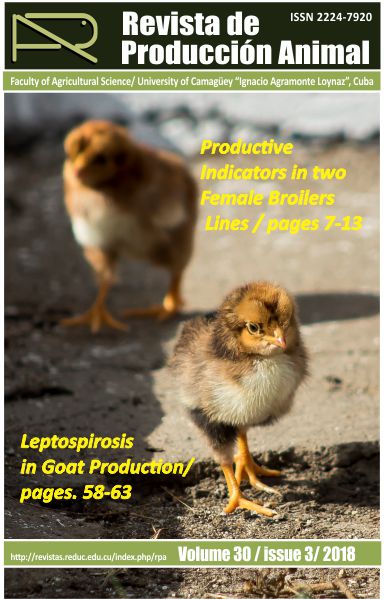Behavior of Productive Indicators in Two Female Broiler Lines Using Two Feeding Systems in Tropical Environmental Conditions
Resumen
To study the behavior of weekly weight, food consumption, and foodd conversion associated to meat production in female broilers in the tropics, 400 one-day old female broilers (200 Ross 308 and 200 Cobb 500 broilers) were included in an experiment. Breeding was made in two houses with uncontrolled environmental conditions. A multifactorial design was used; including lines (Cobb 500 and Ross 308), food presentation (meal and pellets), and two houses, for a base design of eight combinations of factors and a repetition, totaling N=16 quarters. The experimental unit was made of 25 female broilers in each quarter, with a density of 12 chicken/m2, similar to the usual local production conditions. Simple and multiple analyses of variance were made with interactions and analysis of covariance. The values achieved for the weekly weights, food consumption, and food conversion were adequate for the production conditions of female broilers in the tropic, and similar to reports of yielding manuals for the lines studied.
Descargas
Los autores de los artículos publicados en RPA retienen los derechos de autor de su trabajo, de marca y patente, y también sobre cualquier proceso o procedimiento descrito en el artículo, así como a compartir, copiar, distribuir, ejecutar y comunicar públicamente el artículo publicado en la RPA o cualquier parte de aquel siempre que indiquen la fuente de publicación (autores del trabajo, revista, volumen, número y fecha), pero están de acuerdo en que la revista publique los trabajos bajo una licencia Creative Commons.
![]() Licencia Attribution-NonCommercial 4.0 International (CC BY-NC 4.0)
Licencia Attribution-NonCommercial 4.0 International (CC BY-NC 4.0)






































